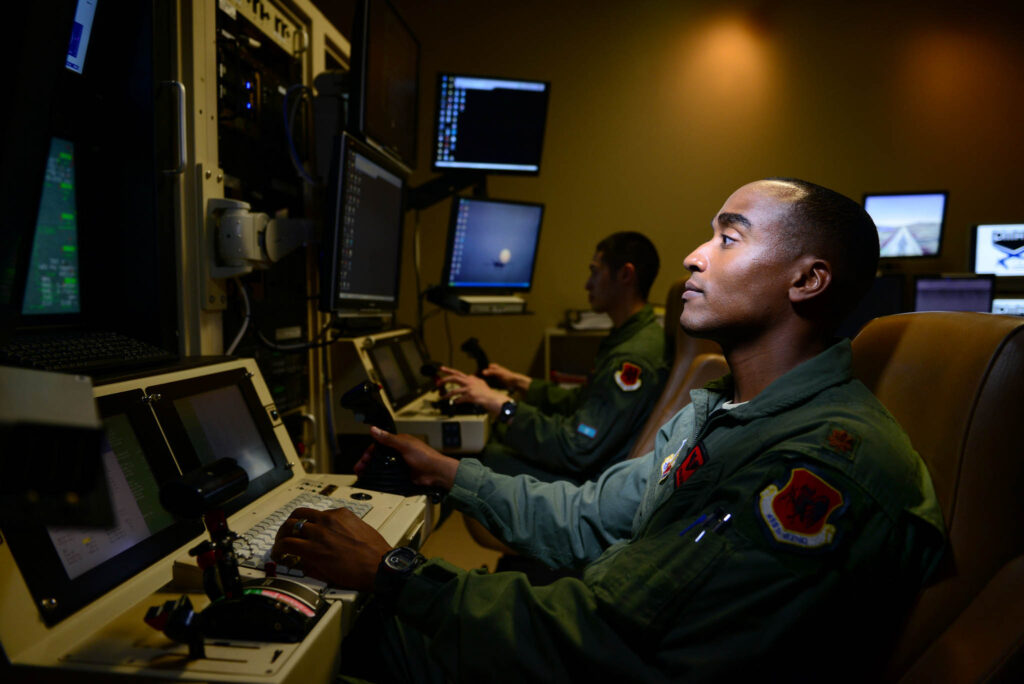
Part of DISA’s role includes managing the video feeds from these aircraft, and ensuring they are shared in near-real-time to relevant parties. (Air Force / Vernon Young Jr.)
CORRECTED
ALBUQUERQUE: A new way of browsing the internet will improve cybersecurity and avoid $300 million in future spending across the Defense Department, Defense Information Systems Agency officials said.
Crucial to this more secure, less costly way of browsing is the DISA-driven shift to Cloud-Based Internet Isolation (CBII). Normally, if you want to see a website on your screen, your computer speaks directly to that website’s server, sending data back and forth every time you click on something or the page updates. That can take a lot of bandwidth and opens opportunities for viruses, denial of service attacks, and other cyber threats to slip in with the legitimate traffic.
Cloud-Based Internet Isolation, however, puts a cloud-based intermediary between your computer and the server. That intermediary handles all the direct communication with the server. All CBII sends the server is the location of your mouse when you click something and the text when you type something. All it sends your computer is an image of the website — like taking a screenshot. That takes a lot less bandwidth and keeps out malware, which means CBII is cheaper than a direct connection.
“At access points we have both bandwidth requirements and security requirements. Over time, as the department leverages more cloud services, services need to go off DoD networks more often, those capacity requirements increase, adding to the cost of the upgrade,” DISA comptroller Christopher Barnhurst told the AFCEA TechNet Cyber webinar. “CBII, by translating the web browser experience off of the desktop and into a cloud, relieves a lot of that bandwidth requirement and therefore allows us to not operate or increase the capabilities at the same rate we otherwise would have. Thus the $300 million in cost avoidance.”
As promised, the browsing doesn’t actually diminish what users can do on their end, and they can still download files directly if they take a few more steps. But as a system-wide shift, cloud-based browsing drastically reduces the bandwidth used by end users. This is useful across the board, and it is especially useful in places where bandwidth is constrained, by geography or austerity.
“Malicious software doesn’t come down to the browser, so there’s no additional risk in using the cloud.” said Navy Vice Admiral Nancy Norton.
DISA is presently engaged in a vast, important, but not terribly flashy project: consolidating all of the various IT systems in the Pentagon’s Fourth Estate into one shared network, managed by DISA. These agencies and offices, which don’t fit cleanly into the other services, developed their own networks in an ad hoc manner.
So far, the Defense Technical Information Center has completed that transfer, with other parts of the Fourth Estate set to follow. While Barnhurst was reluctant to speculate on the shape of DISA’s budget as passed by a future Congress, all speakers on the call emphasized that, through consolidation of the Fourth Estate and innovations like cloud-based browsing, the agency was prepared to return savings from the administrative side of the Pentagon to the fighting side of the Department.
“These are cost savings that can then be reinvested in lethality,” said Barnhurst.
CORRECTION: A previous version of this story misstated Barnhurst’s name.
Major trends and takeaways from the Defense Department’s Unfunded Priority Lists
Mark Cancian and Chris Park of CSIS break down what is in this year’s unfunded priority lists and what they say about the state of the US military.


























